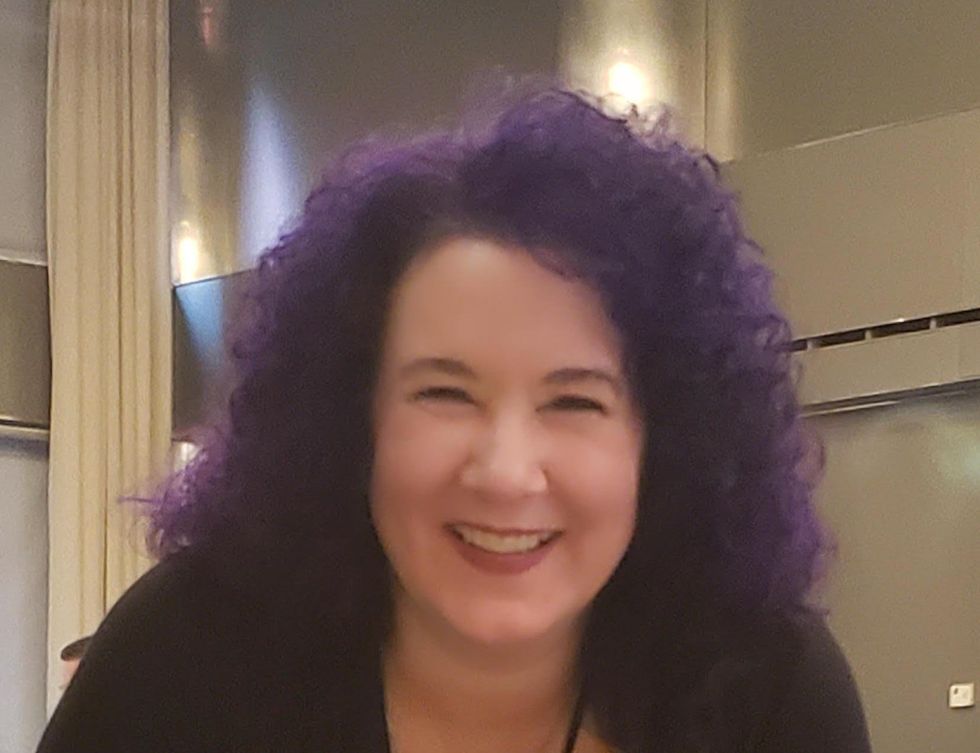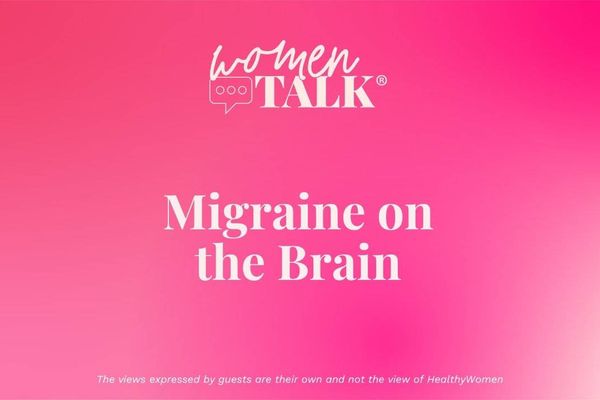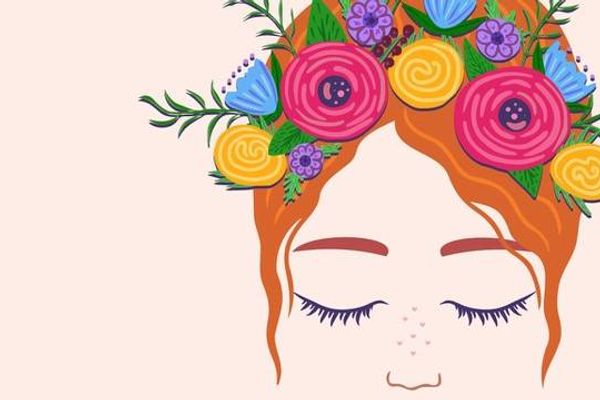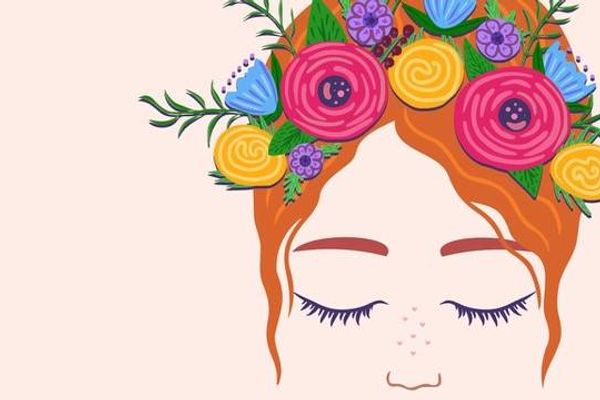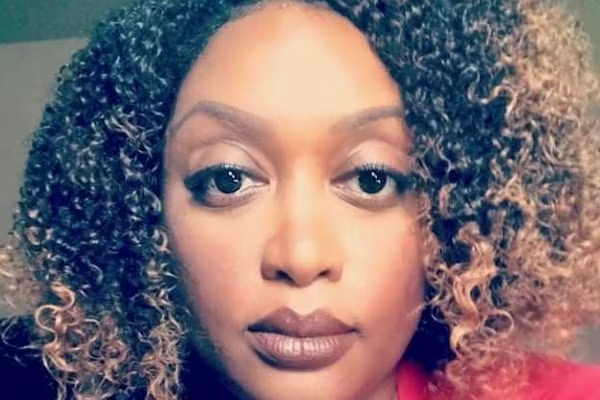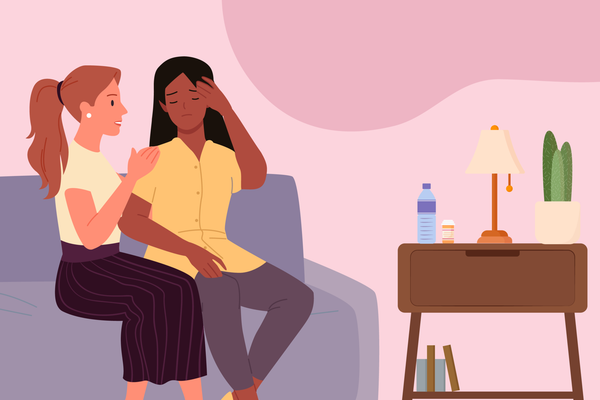By Cat Charrett-Dykes
Knowing what I know now, I can say that I've probably suffered from migraines since the age of seven. Light sensitivity and visual disturbances were just a regular part of my childhood.
At the age of 13, I had extreme pain in my head, like the feeling of being stabbed with a knife in my head. I experienced numbness in my hand and tunnel vision that blocked my peripheral vision. My dad advised me to take an aspirin and lie down. After throwing up, I went to my bed to sleep and awoke hours later feeling better. I never had anything that bad again—until many years later.
Immediately after the birth of my son, I experienced severe head pain. I didn't think about the connection to the issues I had as a child. One doctor diagnosed me with epilepsy and wanted to start me on medication. Another doctor told me I suffered from anxiety. And yet another doctor told me my I was wearing my ponytail too tight!
Fortunately, as my sleep improved, so did my headaches. I concluded that it was just a passing issue. I experienced similar head pain when my daughter was born, but again, it resolved when she started sleeping through the night.
A few years later, the headaches started again. They seemed to affect me mostly around spring, so I chalked it up to allergies. But allergy medicine did not help me feel better. My head pain was a daily issue, but because it was low grade, I could ignore it and get on with my day.
When my son started school, I started practicing martial arts, despite my head pain. It was a few years until my symptoms began to interfere with my training. When my sensei suggested it was probably migraine, I jumped at the chance to find a solution. This was my first step toward getting a migraine diagnosis.
The doctor started me on a medication to see if it would work. When it didn't, we would try another for a month or more, and then another. Every time, I would hope the next one would be the one that would work. But it never was. Nothing could fully help with the level of pain I was feeling.
This trial and error process went on for years. And the more pain I felt, the more I found myself spending time in the laundry room in my basement where it was quiet and dark. I stayed in my cave, which was the only place that I could find relief.
I was 40 years old and felt my life was over. I wasn't able to function as a wife or a mother, and I didn't have a career. It was a very difficult time in my life.
But then, my 12-year-old daughter had her first migraine. It was no longer just about me.
I decided I had to do something to make her life better. I started looking on Facebook for people who were going through chronic migraine and could offer us some hope. The more I looked, the more I found people who also had chronic migraine but could find nowhere to turn.
This discovery prompted me to start something of my own. I messaged people and asked if they wanted to join a support group online. And as the group grew, I was encouraged to start a nonprofit. In 2012, Chronic Migraine Awareness, Inc., was born.
We now have 50,000 people as part of our social media community. We offer private support groups; we have a support squad of volunteers who help people going through a difficult time; and we run a group called ARMS, Advocates Removing Migraine Stigma.
Anyone who has migraine disease is qualified to volunteer. Our organization offers people the opportunity to make the most of their horrible situation. We send out triage kits, which is basically a box of goodies for comfort. This not only validates what a person is going through, but it hopefully creates dialogue with their family.
As the organization grew, I still had not found a way to control my chronic intractable migraine. I felt I had tried everything. I was maxed out on oxycodone for the pain and, at that same time, my therapist retired. I was at the end of my rope and nothing was helping me. I made a plan to take my own life.
But then, I was invited to a pain convention and met a number of doctors focused on pain. As a final attempt to improve my situation, I set up an appointment with Dr. Robert Duarte, the director of the Pain Center at the Cushing Neuroscience Institute and a specialist in pain medicine and headache medicine. He weaned me off the oxycodone and started me on a special cocktail of medicine that I would get every three months, three times a week, for six hours each day through an intravenous infusion.
Read more: Many Migraine Sufferers Given Unnecessary Opioids
It took many years, but I finally found control over my migraines. After finding a cocktail that was working, I also learned I had Hashimoto's disease and gluten intolerance. These were important pieces to the puzzle as I found that changing my diet improved my situation dramatically.
This control over my migraines, along with my understanding of the extent of the disease, enabled me to help my daughter get through her rough moments and recognize signs when she's not feeling well.
We now have so many more resources for migraine sufferers than when I started this journey. I advise everyone to learn about the symptoms. So many people don't realize that their various symptoms are associated with migraine. If you're suffering, make sure you find a headache specialist who is qualified to help you. Don't be afraid to get a second or third opinion, and make sure you're happy with your doctor. Most importantly, know your body and keep a diary!
I lost my identity through my struggles and felt I had no purpose in life. But when I started finding people to help and giving them a job to help others, it gave me purpose. I turned my misery and suffering into a positive, and now my organization and I help thousands of people in 93 countries throughout the world.
This resource was created with support from the Allergan Foundation.

